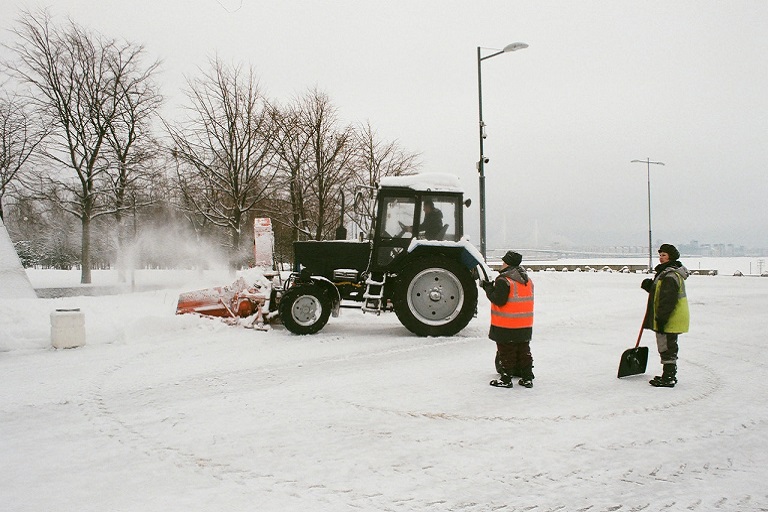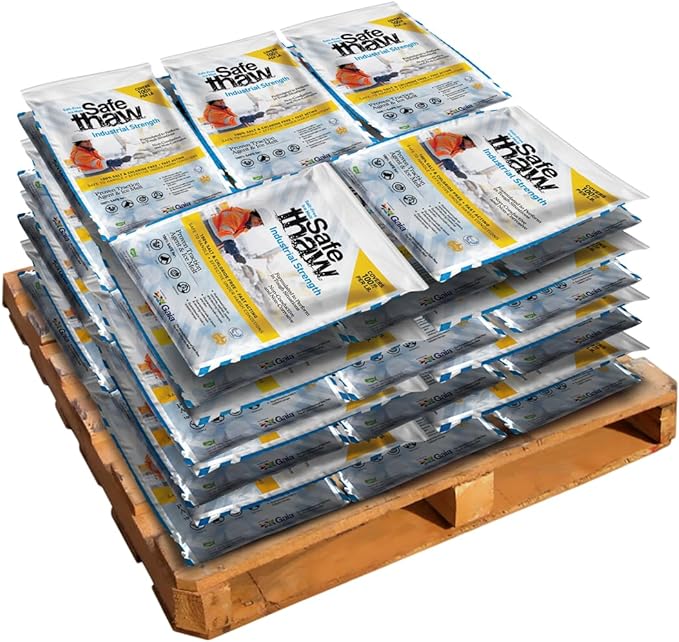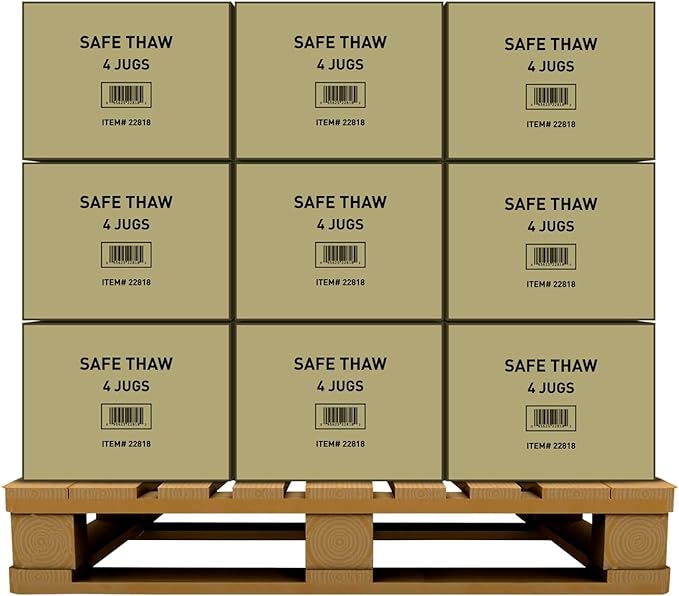Determine Sound Vs. Unsound Concrete – Scaling, Spalling

Scaling is a condition of the concrete surface that results in chipping, cracking, disintegration and flaking. The condition happens due to the presence of salt (calcium and magnesium chloride ice melt) on the concrete surface. Water migration is another result of scaling.
In this article, we will learn about scaling, its causes, and ways to prevent it.
Difference Between Concrete Spalling and Scaling: How to Identify and Repair Damage
Concrete surfaces are designed to withstand heavy loads and harsh weather, but over time, they may develop issues like spalling and scaling. Understanding the difference between concrete spalling and scaling is crucial for effective repairs and long-term maintenance. This guide delves into identifying these problems, assessing concrete integrity, and implementing solutions to restore durability and aesthetics.
Biggest Cause
The concrete surface is exposed to chlorides, de-icing salts, and sulfates that cause scaling. Long exposure to rain or water also results in scaling. Scaling leads to disintegration or weakening of the concrete structure
Salt is usually present in concrete due to the presence of de-icing salts and magnesium chloride ice melt. As the water evaporates from the wet surface, the dissolved salts leave behind concentration gradients that cause water to move into the remaining pores. This results in an increase in pore pressure, which causes cracking or scaling.
The higher the amount of chloride present, the greater will be its effect on scaling and spalling problems.

Scaling vs Spalling
Scaling causes cracks on a dry surface (when exposed to the sun), while spalling happens when there are cracks and then more pressure is applied on it by traffic etc., causing small pieces to break off from the top layer.
Non-Destructive Testing Methods for Assessing Concrete Integrity
Assessing the condition of concrete is a vital first step in addressing spalling and scaling. Non-destructive testing (NDT) methods provide insights into internal flaws without damaging the structure.
Ultrasonic Pulse Velocity (UPV) Testing
UPV testing measures the velocity of ultrasonic waves passing through concrete. Slower velocities indicate internal cracks, voids, or delaminations. This method is ideal for assessing large areas of concrete, helping to pinpoint weaknesses before they become visible.
Impact Echo Testing
Impact echo testing uses sound waves to detect subsurface defects. By measuring the reflection of sound waves, it can identify delaminations, honeycombing, and voids. This method is particularly useful for identifying issues in thick or inaccessible concrete structures.
NDT methods ensure that repairs focus only on affected areas, saving time and resources while preserving the structural integrity of sound concrete.
Role of Air Entrainment in Preventing Scaling and Spalling
Air entrainment is a technique used in concrete mixing that significantly improves resistance to freeze-thaw cycles. By introducing tiny air bubbles into the mix, concrete gains flexibility to accommodate the expansion and contraction caused by temperature changes.
These air bubbles act as buffers, absorbing the stress from freezing water within the concrete pores. Without air entrainment, concrete is more prone to scaling—where the surface layer peels away—and spalling, which involves deeper cracks and material loss. Ensuring proper air entrainment during mixing is a proactive measure to extend the lifespan of concrete, especially in areas exposed to harsh winters.
Water Migration Is Another Result Of Scaling.
Water migration is another result of scaling. Water migration is the process of water moving from one place to another. It can occur when there are cracks in a concrete structure or when the surface of a concrete structure becomes rough due to scaling. Water migration can be dangerous for the integrity of buildings that use reinforced concrete because it causes corrosion in steel reinforcements, leading to structural failure and eventual collapse.

40 Bags
Safe Paw Thaw Industrial Strength Salt-Free Pet Safe Snow Ice Melter and Traction Agent for Concrete, Asphalt, Decks, Lawns, and More, 43 Pound Bag- 40 Bags

100 Boxes
Safe Thaw Industrial Strength 100% Salt/Chloride-Free, Pet/Paw-Safe Snow & Ice Melter and Traction Agent. Use on Concrete, Asphalt, Roofs & On Any Surface, 30 Pound FlexiPail- 100 Boxes

105 Jugs
Safe Thaw Concrete Safe 100% Salt-Free, Pet Safe Snow and ice Melter, Industrial Strength, Chloride-Free, and Traction Agent. Use on Asphalt, Roofs & On Any Surface, 10 Pound Jug- 105 Jugs
The concrete surface is exposed to chlorine and magnesium chloride ice melt and salt that causes scaling.
There are three causes of scaling on concrete surfaces: chlorides, de-icing salts for the driveway, and sulfates. Chlorides are present on the surface of concrete due to three different processes:
- The curing process. When you pour a fresh slab of concrete, it’s saturated with water which is then drained off over time. As this happens, chloride ions (from calcium chloride or other sources) that were dissolved in the water come out of the solution and end up sticking to the surface of your new concrete – these become part of your hardened finish.
- Long exposure to rainwater/deicing salt solution during construction – this can happen if your builder doesn’t properly waterproof their work areas during construction (which is pretty rare).
- Water migration into cracks within a slab over time – this occurs when pressure from above pushes down on those spaces below (like when someone walks across them).
100% Salt & Chloride-Free Ice Melt for Winter Storm Protection.
Impact of Alkali-Silica Reaction (ASR) on Concrete Durability
Another factor affecting concrete integrity is the alkali-silica reaction (ASR), a chemical reaction between alkaline cement components and reactive silica in aggregates. This reaction produces a gel that absorbs water, causing it to expand and create internal pressure. Over time, ASR leads to cracking, spalling, and overall deterioration.
Signs of ASR Damage
- Cracking: ASR-induced cracks often appear in random patterns, sometimes described as “map cracking.”
- Surface Pop-Outs: Small fragments of concrete may break away, particularly in areas with reactive aggregates.
- Discoloration: A gel-like substance may exude from cracks, leaving a white or gray residue.
To mitigate ASR, use non-reactive aggregates and incorporate pozzolanic materials like fly ash or silica fume into the mix. Regular monitoring of concrete structures for signs of ASR can prevent severe damage.
Best Practices for Concrete Surface Preparation Before Repairs
Proper surface preparation is critical to the success of any concrete repair. Addressing spalling and scaling effectively requires a clean and stable base for repair materials to bond.
Steps for Surface Preparation
- Remove Unsound Material: Use mechanical tools like chipping hammers or grinders to eliminate loose or damaged concrete. Ensure the removal reaches sound material to prevent the repaired section from failing.
- Clean Thoroughly: Clear the surface of dust, debris, and contaminants using high-pressure water or air blasting. For oily or greasy surfaces, apply a degreaser to ensure complete cleanliness.
- Roughen the Surface: Create a textured surface to improve the mechanical bond between the existing concrete and the repair material. Methods such as sandblasting or wire brushing are effective for achieving this.
- Apply Bonding Agents: Depending on the repair material, use a bonding agent to enhance adhesion. Follow manufacturer recommendations for optimal results.
Winter Storms Are Here!
Stay Safe with Our 100% Salt And Chloride-Free, Pet Safe Ice Melt.
Difference Between Concrete Spalling and Scaling
Understanding the difference between concrete spalling and scaling is key to identifying and addressing the problem effectively.
What is Concrete Scaling?
Scaling refers to the gradual peeling or flaking of the concrete surface, typically caused by freeze-thaw cycles or the use of harsh deicers. It primarily affects the topmost layer, leaving the underlying structure intact.
- Signs of Scaling: Surface roughness, small pits, or shallow flaking.
- Prevention: Use sealants and ice melt safe for concrete to minimize exposure to moisture and chemicals.
What is Concrete Spalling?
Spalling is a more severe condition involving deeper cracks, delamination, and chunks of concrete breaking away. It is often caused by internal pressure from freezing water or ASR.
- Signs of Spalling: Deeper cracks, exposed aggregates, and large fragments breaking off.
- Prevention: Proper drainage, air entrainment, and regular inspections to catch early signs of damage.
Preventing Concrete Damage with Ice Melt Safe for Concrete
Deicing chemicals play a significant role in scaling and spalling. Traditional salt-based ice melts exacerbate moisture absorption, weakening the concrete. Using products labeled as ice melt safe for concrete, such as Safe Thaw, reduces these risks. These chloride-free products effectively melt ice without introducing harmful chemicals that cause long-term damage.
Apply ice melt sparingly and remove any residual material after the ice has melted. Combining this approach with preventative measures like sealing and timely snow removal ensures a safer, more durable surface.
The Connection Between Safe Deicing and Safety in Manufacturing Plants
While this article focuses on residential concrete, maintaining safety in manufacturing plants also hinges on effective ice management. In industrial settings, spalling and scaling can pose hazards, such as tripping or equipment instability. Non-destructive testing and safe deicing methods are equally crucial in these environments to protect both workers and infrastructure.
Conclusion
Concrete spalling and scaling are common issues that, if left unchecked, can compromise structural integrity and aesthetics. Understanding the difference between concrete spalling and scaling, utilizing non-destructive testing methods, and adopting best practices for surface preparation are key to addressing these problems effectively.
Incorporating air-entrained concrete, mitigating ASR, and using ice melt safe for concrete can prevent damage and prolong the lifespan of your concrete surfaces. Whether managing residential driveways or ensuring safety in manufacturing plants, these strategies safeguard your investment and maintain structural durability.
Try Also Our Other Winter Safety Products:
Safe Paw
The Original and #1 Selling Pet and Child Safe Ice Melt for over 20 years. Guaranteed environmentally safe –It won’t harm animals or children, and it won’t damage your property. That’s Safe Paw. Safe Paw can change how winter affects our planet.

Walk On Ice
The handy disposable canister can be taken everywhere, with the same 100% naturally occurring minerals that provide instant traction on ice or snow. Use it on sidewalks, steps, or as an instant traction agent for your car.



